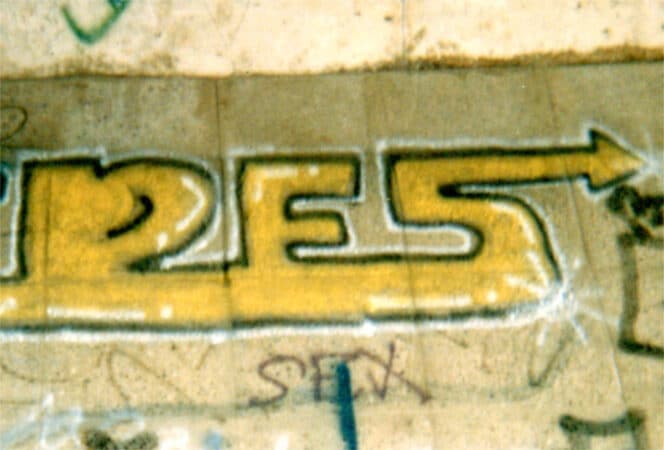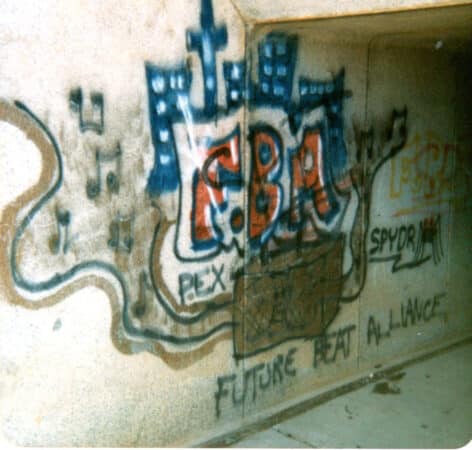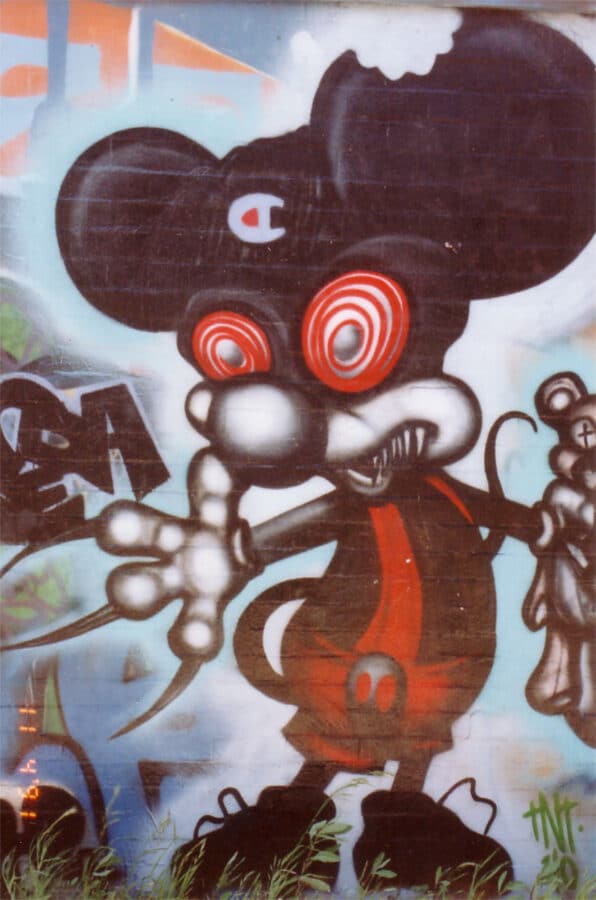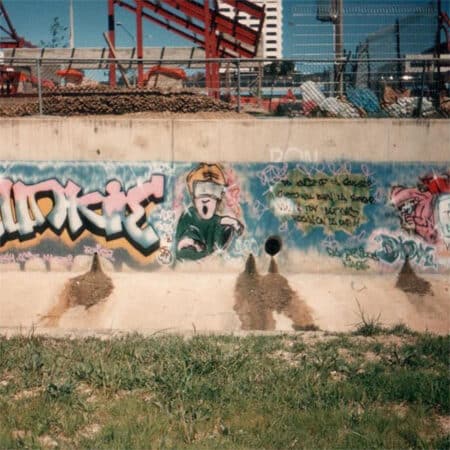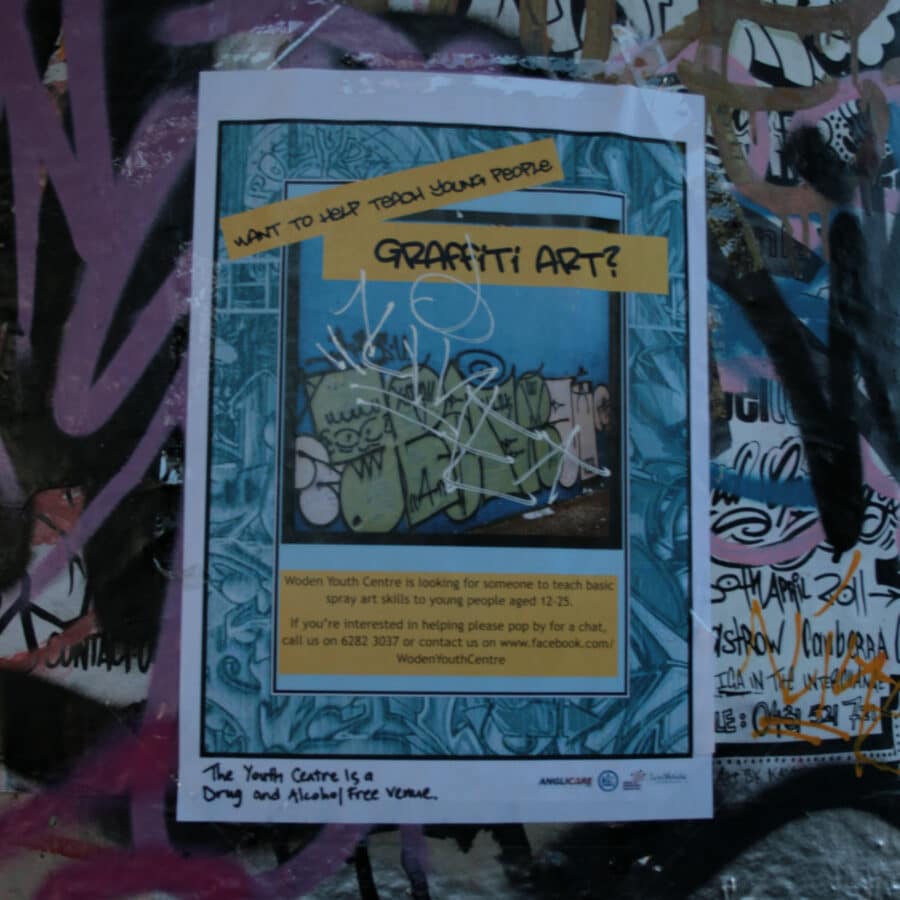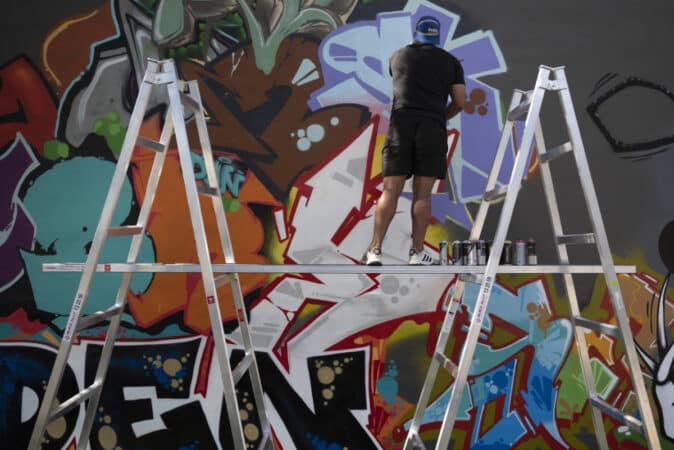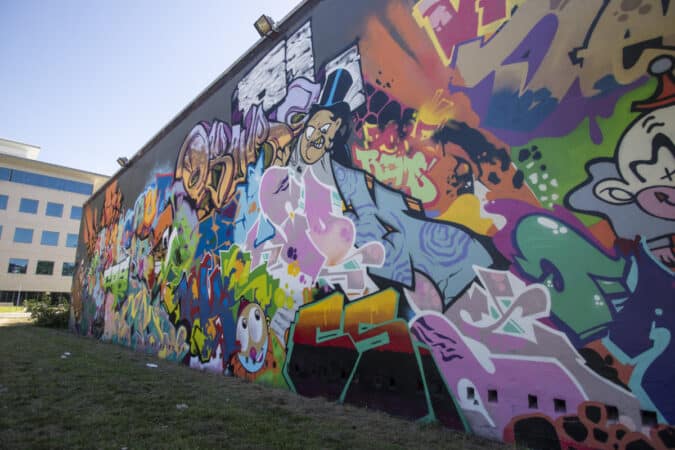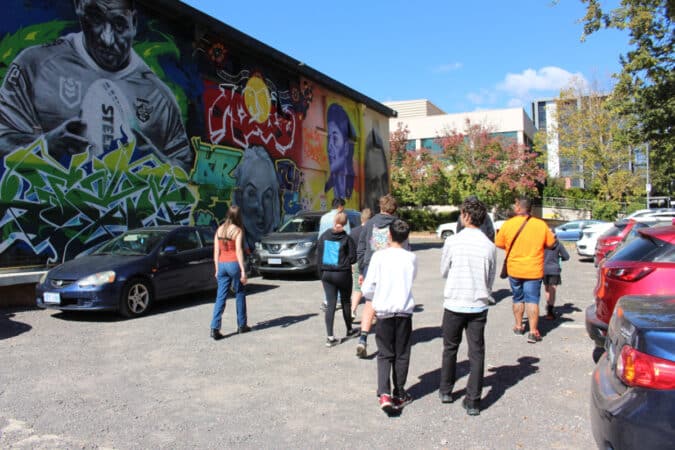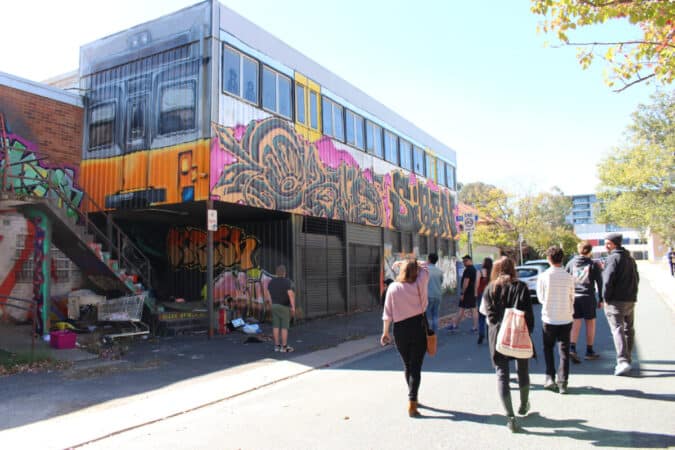It needs to be done – a brief history of Canberra graffiti
This page is an edited excerpt of ‘It needs to be done’, an article by researcher Caren Florance. Read her full article, with references.
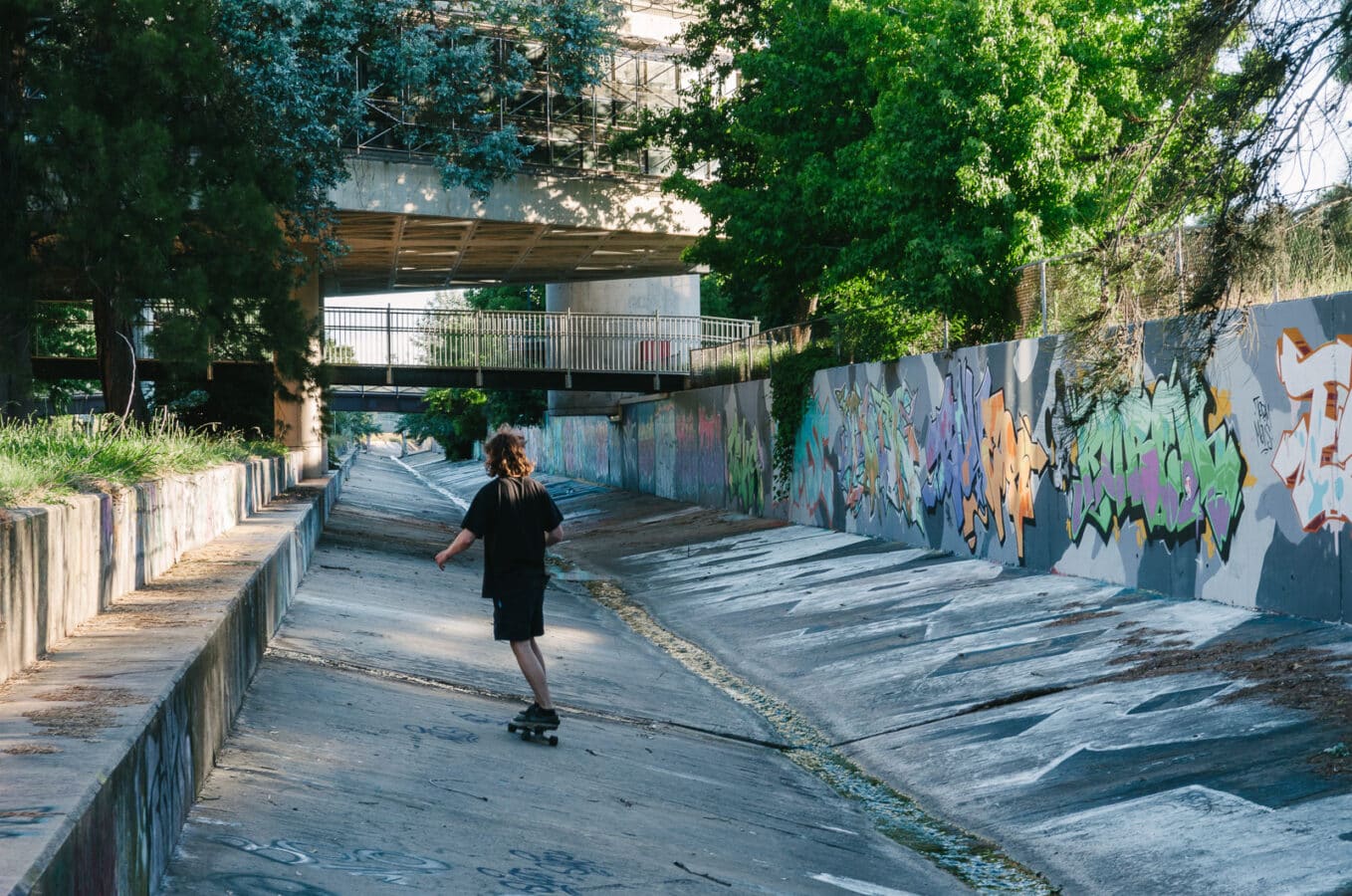
In the beginning
JINKS (@EVILJINKS) was present for the first moment of southside graff in 1982. A couple of disclaimers:
1. something similar might have happened in the northside around the same time, but getting around Canberra was pretty hard back then and no-one is left to tell that story, and
2. yes, there was lots of toilet-door, punk, political graffiti in the mix back then, but this was done in the name of hip hop culture, and that’s a whole different animal.
The moment in question took place in the Kambah Adventure Playground, and they were early-teen schoolboys heavily into breakdancing. This is before Canberra even had its first video shop (1983) so the only exposure they had to graffiti and hip hop was via the tv show Countdown, a few record covers, and one of them knew a guy who was stationed in Canberra with the Marines. They didn’t know about New York Style, or tagging, or train-painting, they just knew that words needed to go up onto walls with spray paint, so they made it all up for themselves. JINKS said that the kid in question, who later went by the name DEVIL, said that he did it ‘because it needs to be done’, and it’s a phrase that JINKS himself has carried with him for forty years as a credo: he does it because it needs to be done. It’s a notion that goes deeper than fame: it’s an aesthetic impulse, an urge to see something happen the right way, or a new way, and doing it because no-one else is doing it for you.
By around 1986 things were ramping up. Canberra had a small, tight scene, with crews that kept to themselves as they built up skills and rhythms. There were a lot of police chases, so JINKS and his friends became super-organised, organising a legal crew name that painted permission walls, while also doing more adventurous things at night under a different name. Things got too hot, they changed it up. ‘Changing it up’ meant changing their writing names, sometimes weekly. They were highly cautious, keeping paints, design sketches and photographs in hiding places well away from their homes. There were rarely photos, because getting them developed and printed was problematic: you risked being reported to the police by the photo lab. This was well before the conveniences of digital photography. They had to work with a very restricted palette, as the range of paints available was small: basic hardware cans in about 8 colours, and they innovated with things like Tuxan shoe paints and nozzles from all kinds of domestic spray cans.
Birth of the legal walls
The old Woden skatepark, and the walls of the Woden squash courts were iconic spots in the first decade or so of graff activity – the Squash Courts because the Board at the time allowed activity because they backed onto a quiet spot near takeaway food, a perfect hangout spot. This was a ‘permission wall’, allowed by the property owners rather than a public ‘legal wall’ mandated by the government. Later, when the Board changed personnel, attitudes changed too, and they started buffing.

The ACT’s overall change in attitude was not a smooth one. Before self-government, the attitude towards graffiti was that it was pure vandalism: the (Federal) police patrolled, chased, caught, and either fined or made the offenders scrub it off. Early attempts to discourage tagging included periodic competitions for schoolkids to paint murals in the interiors of the concrete bus shelters, many of which survive now.
For the first few years after the first Territory elections in 1989, the newly-elected representatives were fully preoccupied with the job of establishing a system, working with budget lines, and implementing it all. The police were business as usual, catching, chasing, warning, but policy debates about graff damage and deterrent strategies were slow to get started, until well into the early 1990s. The first constructive debate about graff was orchestrated in 1992 by Helen Szuty, an Independent elected on the same ticket as Independent Mike Moore, and together they fought for a number of social justice issues, sometimes successfully, sometimes just to raise awareness. Helen had been director of the Weston Creek Community Service, covering an area that has very few amenities for youth, even now. She was one of the first people to push graff as ‘art’, to give it a status more connected to creativity than to vandalism. Her motion to the Assembly called on ‘the Government to assist in identifying more space for graffiti art in Canberra, along major thoroughfares and in places people congregate.’ It’s worth reading that debate, which was intelligent and measured, but the motion ultimately failed, by one vote. What it did do was change the focus, to get the opposition to consider the idea of ‘street art’ as a valid concept.
In 1995 the ACT elected its second Liberal ministry, headed by the ferociously efficient Kate Carnell. Graffiti is front and centre of any ACT Liberal agenda, to this day, because they believe that visual disorder is a sign of anarchy and loss of control. It’s an easy outrage mark, and gains votes from the people who like to keep things nice. Kate and her team didn’t waste time. By August of that year her government called out for public submissions for an Enquiry into the Impact of Graffiti in the ACT, run by the Standing Committee on Planning and Environment. There were many quite amusing public submissions, but also some serious feedback from the Woden Youth Centre. The one good thing to come out of this enquiry was the recommendation to identify areas for street art practice, and so the legal walls started to happen, though not in a proactive way. As noted earlier, you had to ask to receive.
Push and pull
On the flipside, the Liberals also started the Can-It squad, which was a bit like Neighbourhood Watch but focused on buffing graffiti, and a register of graffiti sites and tags. This meant that if you wanted to tag, you had to register your tag, and if that tag was used too often, you would be punished. As we learned from JINKS, you can understand how futile this was. Writers and taggers had learned to change tags like they change underwear, and this just increased the danger, and thus the excitement. In 1997 the ACT Courts sent their first graff tagger, PSY, to Goulburn Jail for 78 counts of vandalism. No-one disputes that PSY went over the top and had been warned many times by the courts that he was looking at jail, but it wasn’t a successful outcome. By all accounts PSY has never recovered from the experience.

In the early 2000s, the ACT went back to a Labor Administration that has never lost its hold, thanks to their collaboration with the Greens and various independents. They held another enquiry into the impact of graffiti in the ACT, which also involved asking young people how they felt, via the government-funded Youth Coalition of the ACT. One of the more significant comments from that was that
“young people are less likely to find the presence of graffiti threatening or indicative of danger and instead more likely to feel that a place with graffiti may be either for young people to use or welcoming towards young people. This may be quite different to other groups in the community who find the presence of graffiti disturbing and may feel unsafe or unwelcome in a place where there is graffiti.”
Regardless of this insight, there are a lot of Canberrans who like their city clean and neat. There have been numerous attempts to stem the now burgeoning graff scene, fuelled by the internet’s capacity to share information and photos widely. In 2007, MLA Steve Pratt called the media photographers to watch him scrub off a piece near the Woden Cemetery, and they happily watched him, knowing that it was a legal work.
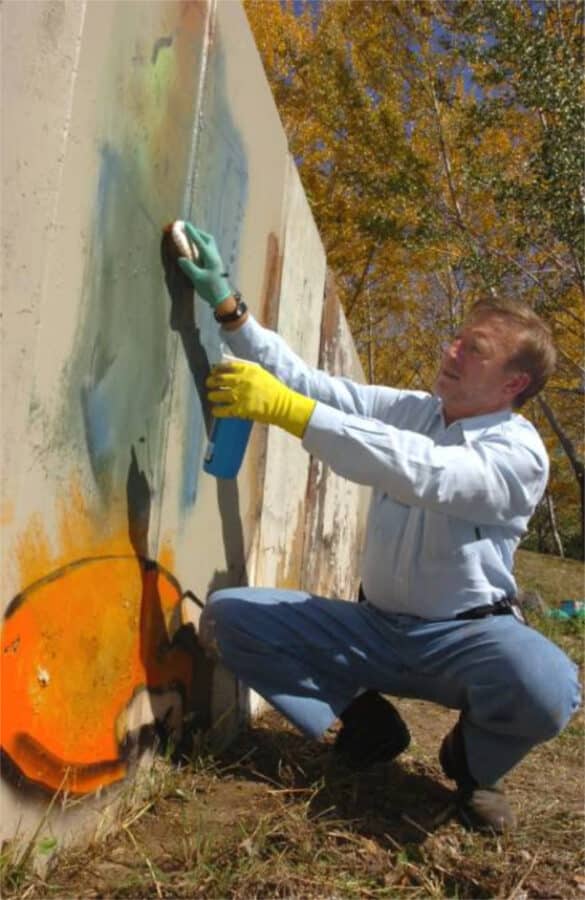
The local artists then painted him doing the scrubbing on the same site. Even The Chaser got in on that one.) In 2011, the government employed a private company, ‘Canberra CBD Ltd’, to have security guards with dogs patrol Civic and Braddon – and charged all the businesses in the area a levy to fund it. That didn’t last long. In 2014 they tried to introduce a phone app: Vandal Trak. These days, they have the ‘Fix my street’ site. Most of this is directed towards the taggers, who haven’t been deterred in any way. In fact, they seem to thrive on challenge.
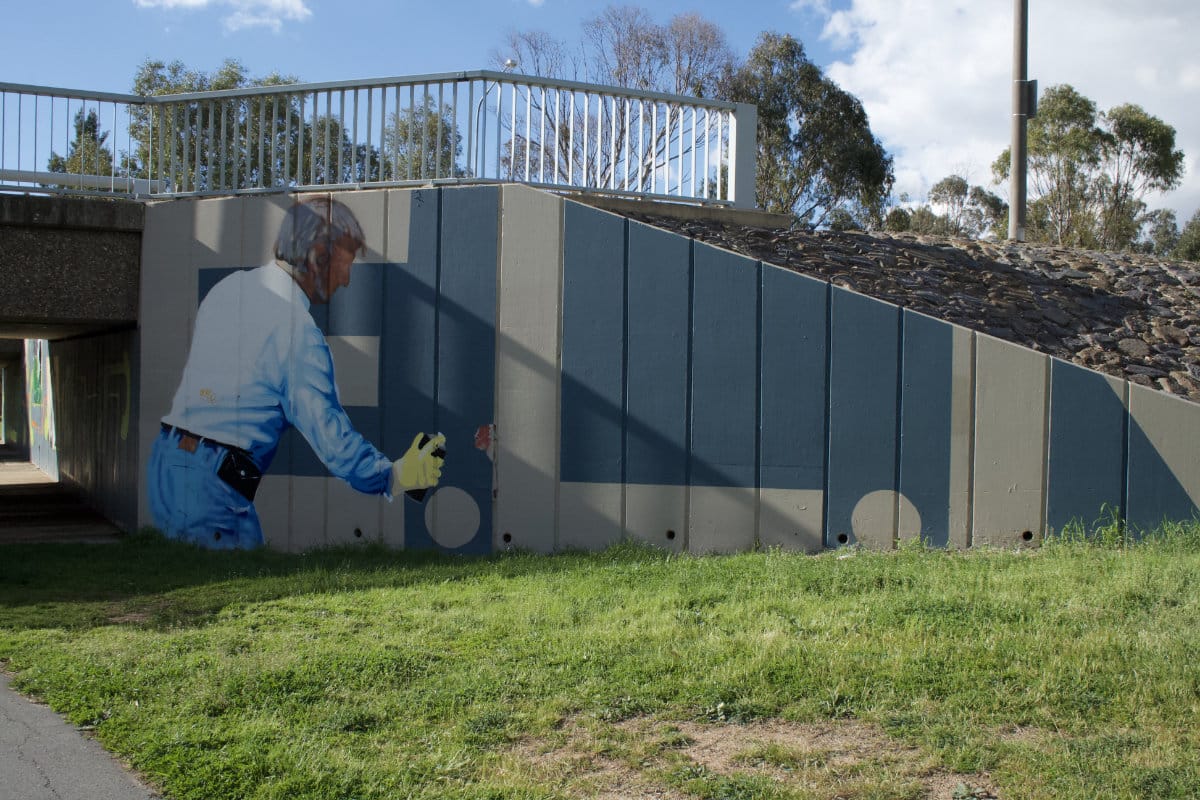
Writing History
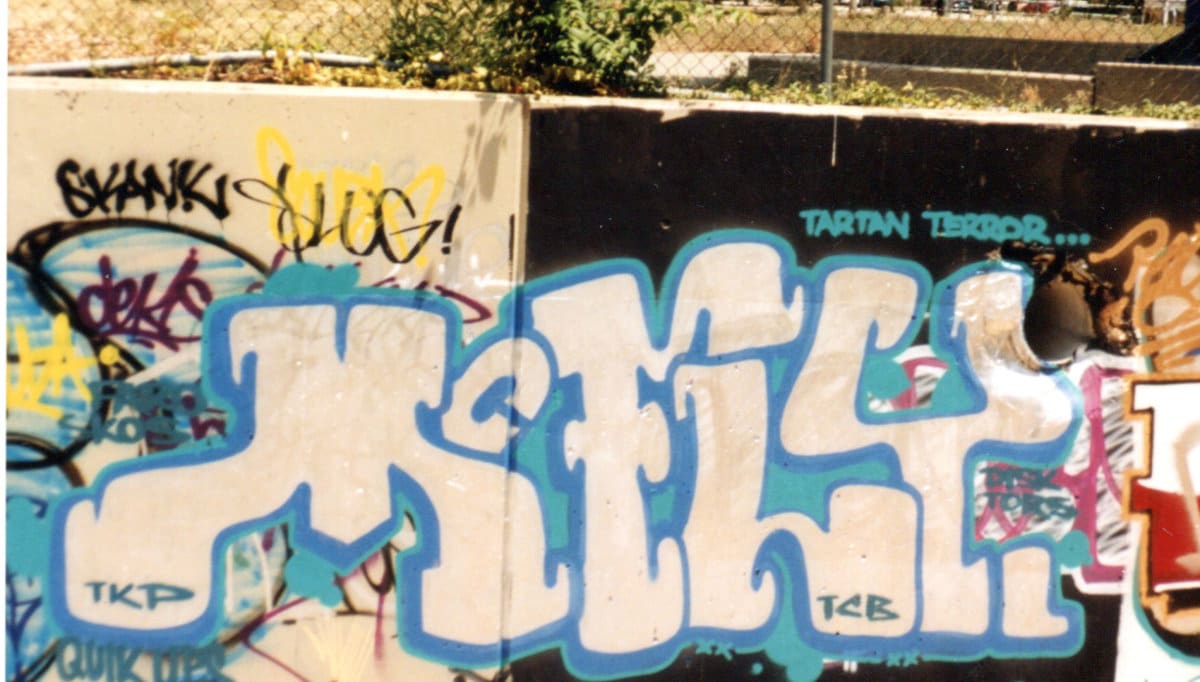
There have been a couple of recent attempts to build bridges over the long-term rift between graff and street art. On the southside, the Woden Squash Courts were repainted in 2020 as a tribute hall of fame site for the early years of graff, by a variety of old and new writers. When a wall like this is painted, it’s bonded with a special chemical so that if it’s tagged or there’s an attempt to repaint, it can be hosed off pretty easily. So it’s a mural, rather than a live graffiti piece, but it serves the purpose of a style archive, which gives the community a sense of history.

The other, also in 2020, is perhaps not as permanent, but just as important. The old PCYC site in Turner has been derelict for over ten years, with the insides full of pigeons, rats and masses of fresh graffiti. Veteran street artist Dai Cameron managed to pull together a gun team of both old and new graff writers, old and new street artists and a couple of interstate guest writers to refresh the site until the PCYC can finally get moving on its demolition and renewal. It’s an incredibly fresh mix of graff and mural, one that might not fix any old problems, but certainly bodes well for new directions.

